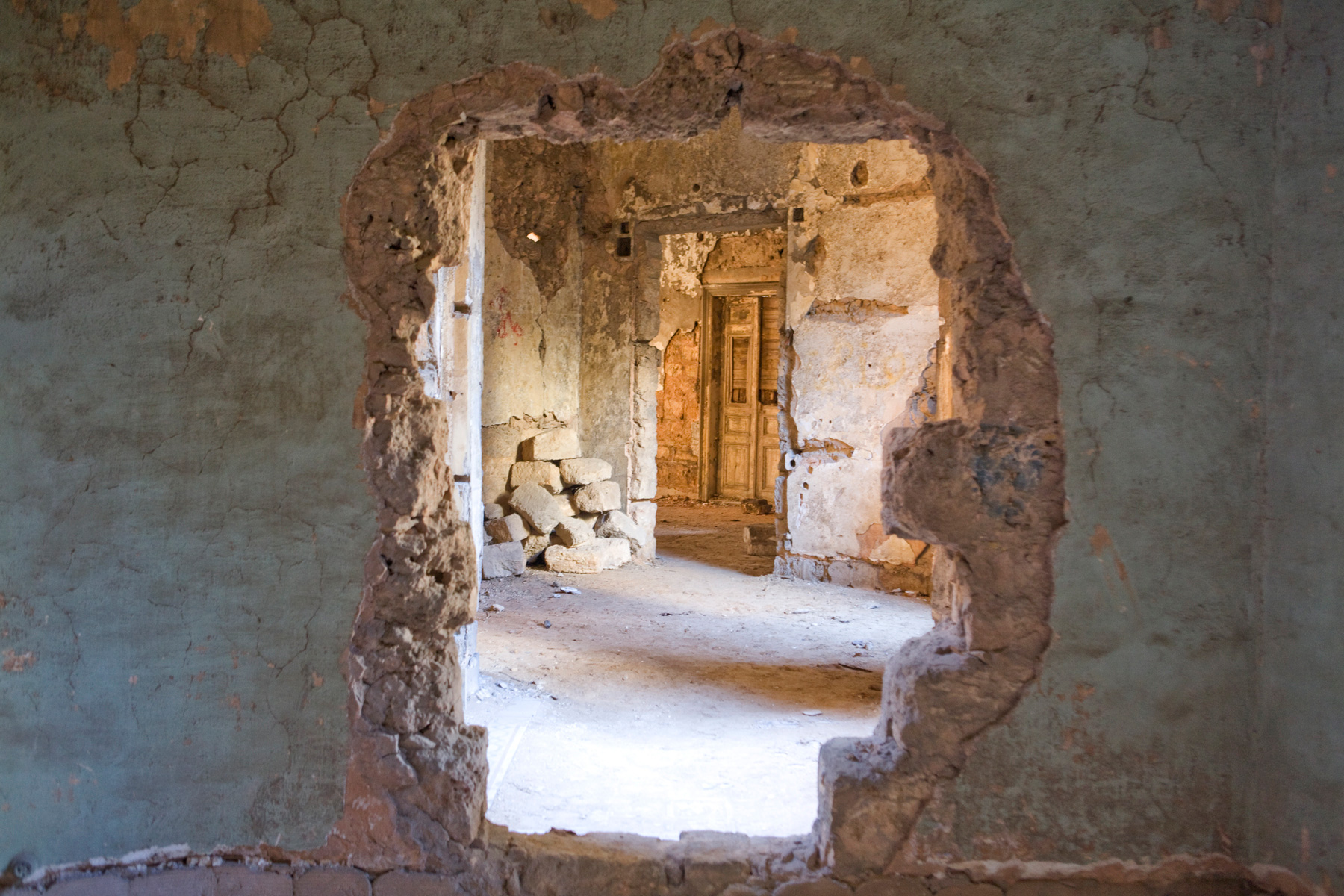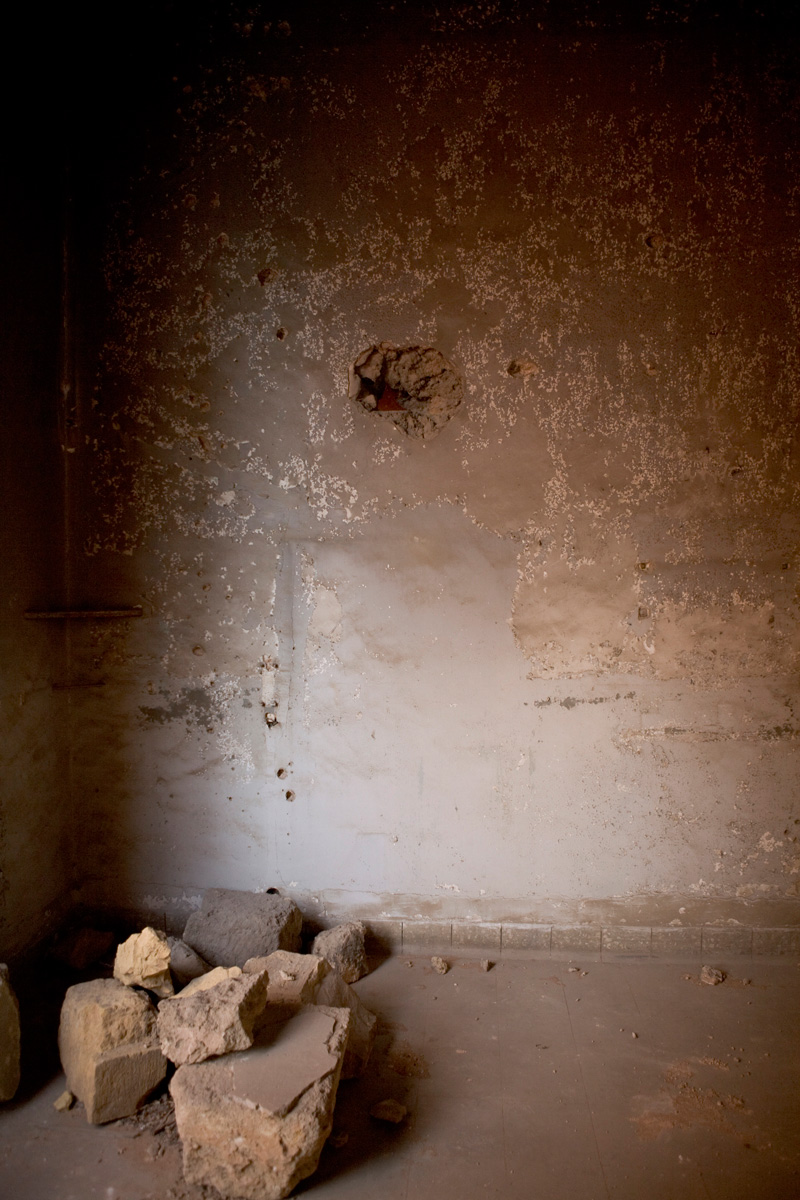Bullet Hole, Beirut, thematically began my exploration of homely places that had been violated by history. My site of investigation was the prestigious Barakat house or maison jaune because of the colour, a damaged set of Art Deco apartments that had withstood the onslaught of war. The Barakat house was a site where the camera obscura became the perfect medium and place for me to do the things that I wanted. Located on the former ‘green line’, it became a sniper base during the civil war of 1975-1990 and is littered with thousands and thousands of bullet holes. I was granted access to create a camera obscura installation using one of the bullet holes which had pierced the outside wall. The yellow house, is poignantly now the first memorial of its kind: a Museum of Memory to commemorate the civil war.
I wanted to make political the bright projections of the camera obscura using specifically a bullet hole within a historically violated architectural space, to shed light, to expose, on the otherwise hidden, obscured, darkened, imminently destroyed history and ideology of family. The bullet puncturing a stone wall, is synonymous of Roland Barthes’ punctum, described in his book, Camera Lucida as the accident in a photograph that disturbs and bruises. Deeper meaning triggered by the penetration of a bullet becoming the source of a photographic image transforms and expands thought. The notion of the strength and speed of the violence through stone, opens your mind as does light pouring through the bullet hole and transforming itself into the live photographic image projected onto a site that is already layered with its own history. Here the punctum is the source for the image filling the interior space of the camera obscura.
The walls have been savaged, yet parts of the interior are staggeringly beautiful. Colours of peach and baby blue soften the blows in the concrete. The slit targets decommisioned, are now quiet; we can walk up to them, and on close inspection attempt to understand the horrors of war.























